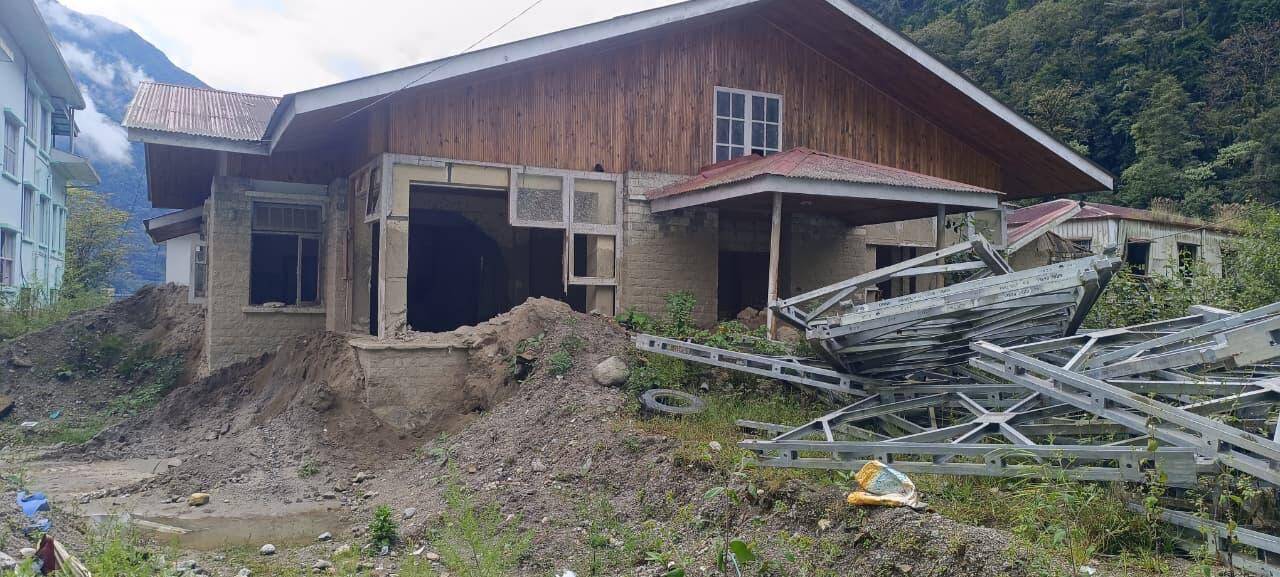Two years after South Lhonak disaster, lessons for a changing Himalaya

Two years have passed since the devastating Glacial Lake Outburst Flood (GLOF) from South Lhonak Lake struck the Teesta Valley in Sikkim on the night of October 3–4, 2023. Triggered by a massive landslide into the lake at 5,200 meters above sea level, the chain of events surged over 385 km downstream, reaching as far as Bangladesh. It claimed 55 lives, left 74 missing, displaced thousands, and caused severe damage to infrastructure, hydropower projects, and farmland.
As the valley continues to recover, the 2023 GLOF remains a stark reminder of the growing risk from cascading mountain hazards. This anniversary is not just about remembrance but also about reflection and renewed commitment to resilience.
The Teesta Valley continues to face long-term impacts. Over 25,900 buildings were damaged or destroyed, 31 bridges were lost, and 270 sq km of farmland was affected. Roads such as NH-10 remain unstable, disrupting connectivity. Riverbanks continue to erode, threatening nearby settlements, while rainfall often reactivates unstable slopes, creating new hazards. These conditions underline the urgent need for integrated climate risk assessments and sustainable rebuilding.
The South Lhonak disaster showed that GLOFs are not single events — they trigger a chain of long-lasting hazards. Riverbank collapse and sediment erosion continue to reshape the valley, threatening homes and infrastructure. The destabilised slopes are now sources of repeated landslides, highlighting that GLOFs can set off prolonged cycles of risk lasting years after the main event. The GLOF mobilized nearly 270 million cubic metres of sediment, drastically changing the valley’s landscape. These deposits raised riverbeds and increased flood risk during later monsoons. Flood sediments are still being reactivated during heavy rains, creating hindrances to the hydropower plants and downstream communities.
The 2023 flood was closely linked to permafrost thawing — the degradation of frozen ground due to climate warming. In the high Himalaya, permafrost acts as a natural glue that holds rocks and slopes together. When it melts, slopes become unstable, increasing the risk of slope failures and potential GLOFs. Despite its importance, permafrost remains one of the least monitored parts of the mountain environment. Regular monitoring using satellites, sensors, and field studies is essential for early warning and prevention.
Recovery is not just about rebuilding what was lost — it is about rebuilding better. Strengthening community awareness about GLOFs and related hazards, developing effective early warning systems, and investing in climate-resilient infrastructure are key steps toward safety. Creating buffer zones, reinforcing riverbanks, and preparing evacuation plans can be effective risk reduction strategies. Equally important is understanding how GLOFs occur — from glacier retreat and permafrost thaw to sediment movement — so that communities can anticipate, adapt, and act before disaster strikes.
The South Lhonak Lake outburst was a wake-up call. Its scars remain visible across the Teesta Valley, reminding us that climate change is reshaping the Himalaya. Strengthening monitoring, improving scientific hazard assessments, and empowering local communities are vital to reduce future risks. As we mark two years since the tragedy, let it serve not only as remembrance but as a call to learn, adapt, and act for a safer mountain future.
Disclaimer
Views expressed above are the author’s own.
END OF ARTICLE





